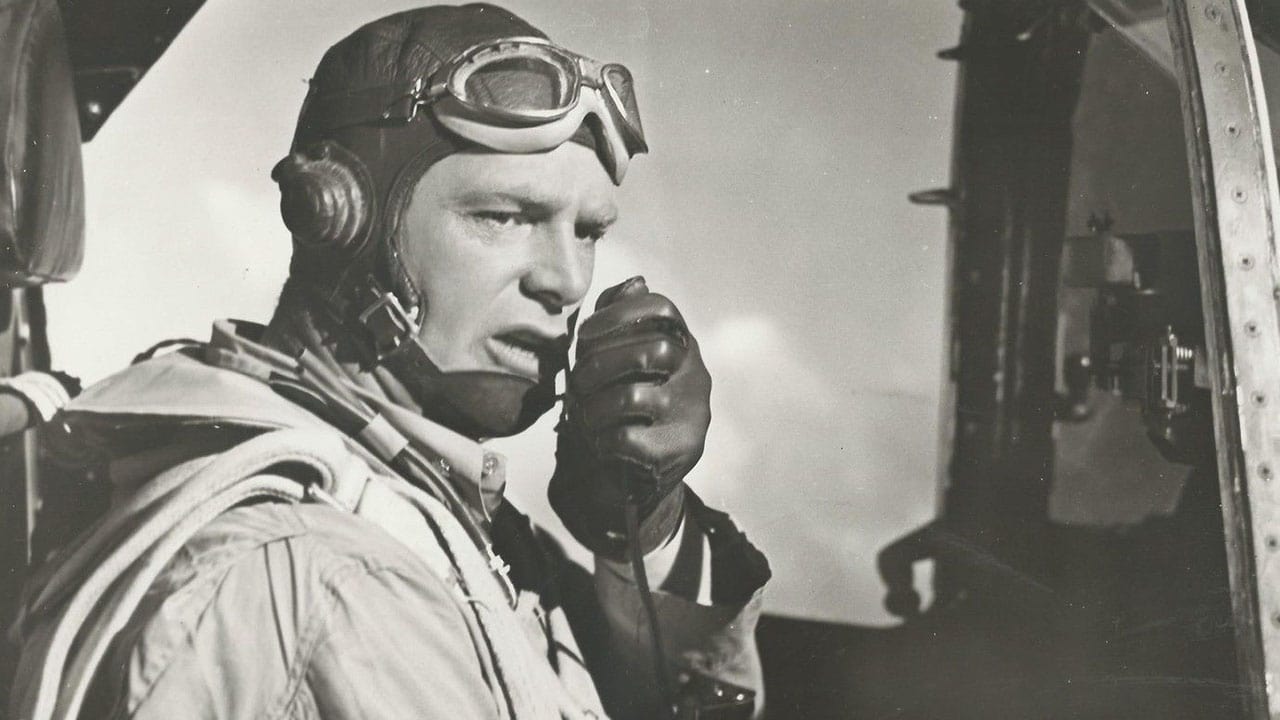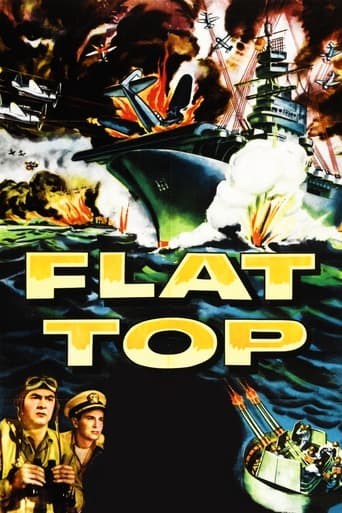

There are better movies of two hours length. I loved the actress'performance.
... View MoreBlending excellent reporting and strong storytelling, this is a disturbing film truly stranger than fiction
... View MoreI didn’t really have many expectations going into the movie (good or bad), but I actually really enjoyed it. I really liked the characters and the banter between them.
... View MoreThere are moments that feel comical, some horrific, and some downright inspiring but the tonal shifts hardly matter as the end results come to a film that's perfect for this time.
... View MoreThe opening credits and martial music seem rather grand to be bearing the infamous name of poverty row purveyors Monogram Pictures - now moving (for them) upmarket and soon to rebrand themselves Allied Artists - by whose standards this production by Walter Mirisch (who later gave us 'The Great Escape') obviously represented a prestige project. Those with a knowledge of US military aircraft will as usual have a great time pointing out all the mismatched aircraft footage (just as trainspotters never tire of pointing out that the rolling stock is all wrong in any film with a railway setting); but the 16mm Kodachrome film shot by enterprising wartime cameramen was already proving a gift that keeps on giving, of which this early production was an early beneficiary, aided by Cinecolor photography by Harry Neumann and art direction and editing by David Milton and William Austin that reasonably unobtrusively blends the original footage with studio work and scenes actually shot on the USS Princeton.The names of Sterling Hayden and Richard Carlson gave a strong hint as to what to expect, and sure enough we get the usual conflict between granite-faced by-the-book disciplinarian Hayden and nice guy Carlson who comes to appreciate the wisdom of Hayden's anti-charm offensive on the new boys (who include a youthful-looking William Schallart in a surprisingly substantial early role as 'Longfellow').The film holds your attention for the most part, although Marlin Skiles' music increasingly emphasises exhilaration rather than grim determination on the part of the flyers; and I did find my attention starting to wander during the final twenty minutes when the excitement was supposed to be at its height.
... View MoreFlat Top is a run of the mill war film with an old plot device about a conflict between the group captain and the executive officer on how to command. But considering this came from Monogram Pictures which was transitioning to Allied Artists, for what product normally came from that studio this could have been Gone With The Wind.Monogram even sprung for color and utilized some real combat footage from the Battle of Leyte Gulf. The stars are Sterling Hayden and Richard Carlson as the skipper and his number 2. It's the usual story, the tough new skipper and the executive officer who is loved by the men under him. Both these guys and the cast beneath fill their roles out well.Giving as a high a rating as I do for a Monogram Picture believe me it's worth your while to give this one a look.
... View MoreRichard Carlson is the pilot who lands a green squadron aboard the USS Princeton, but before they can take a crack at those Japs they all must be whipped into shape by their tough commander, Sterling Hayden. The combat missions increase in difficulty and some losses are incurred but eventually they straighten up and fly right, thanks to Hayden's unyielding demands.Most of the combat footage is familiar from other films about the war in the Pacific. If I see that flaming Japanese fighter skimming the surface of the ocean and curving into the ocean one more time, I think I'll -- well, I don't know what I'll do. Write a love letter to Lindsay Lohan or something equally crazy.Some of the newsreel photos are fresher than that. In one case, we see from the bridge of a carrier the slow-motion bounce of a Corsair that brings the airplane and its monstrous propellor, the size of windmill blades, careering into the superstructure just below the camera placement. I can't imagine how the photographer escaped with his legs intact.At the same time, though, there is a reckless disregard for historical niceties and for continuity. We see the American aviators in the distinctive cockpits of Corsairs (the Japanese are seen in mock ups of canopies from later models of the F6F Hellcat) and the next we see from external shots that they are flying Hellcats or Helldivers or Douglas Dauntlesses. You don't really need to be an airplane aficionado to find this a little irritating. If you're anything but an underaged clod you'll find it annoying. It's like watching a movie of a man driving a speeding car on the freeway and in the next shot he's bent over a bicycle's handlebars on a country road.The plot is a version of the process that had already become cinematic fodder and was to continue serving the same purpose, a thread to hang other events and developments on. The new commander must take charge of a group that is either new to combat or disillusioned by it. Often, as here, he has a tender-minded executive officer who is too close to his men and seems to be coddling them. The commander must be cruel in order to be kind. It's his job to be tough on them because no matter how miserable he makes their lives, it's nothing compared to combat. I'll mention "Take the High Ground," "Patton," "Twelve O'Clock High," and "Flying Leathernecks" as other examples.But although the ultimate goal is lofty enough, the dynamics are really more interesting from a psychological point of view. One thing about military training, or any other preparation for a life-and-death enterprise, is that it provides an outlet for sadistic impulses of the commander. In the movies, the commander almost always ends up showing his humanitarian side. ("The Caine Mutiny" is an anomaly in this regard.) And we, the audience, watch with delight as the commander goes from man to man, ripping each subordinate a new sphincter. Sigmund Freud called it Schadenfreude, taking joy in seeing the pain inflicted on someone else who's shown weakness. And the caring quality of the commander that is revealed at the end, when his men understand him and his motives better, is a sop thrown to the audience so they don't have to feel guilty about having enjoyed all the pain they've just witnessed. I once had a skipper like that. On the surface he was kind of crusty and abrasive, but underneath that he was a sack of sentimental mush. And underneath THAT he was a real MEAN SOB.There's an interesting movie buried in this strictly routine genre film but no one has bothered to try digging it out. Certainly not the writers. ("We're going to hit them, and hit them hard.") I generally like war movies because war is in many ways the ultimate experience -- putting your life at risk because a stranger orders you to and without any hope of personal profit. But it's disappointing when they treat war as if it were something that only belongs in comic books or cartoons. The total social calamity that war represents is cheapened.
... View MoreThis is a rather run-of-the-mill War movie on board an American flat top in the Pacific against the Japs. Definitely not in the class of "A wing and a prayer" or "Tora, Tora, Tora" and, without much background footage, even not up to the mediocre Midway. Education under fire with an as always impressing Sterling Hayden, not much else. Definitely a B-Movie under war movies issued during this area. Consumer commodity stuff not, if you want action, look at the above mentioned movies, if you want it along with history, choose Victory at Sea. Five out of Ten at best for the dogfight at the very end. Actually difficult to crunch out ten lines for this, isn't it.
... View More